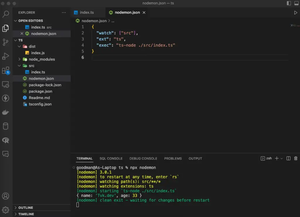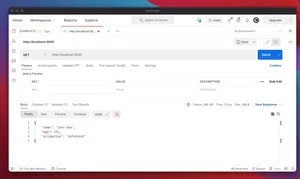Overview
Express.js is a popular lightweight web framework for Node.js designed for building web applications and APIs. Handling response timeouts in Express.js is crucial for maintaining a reliable and performant service. Timeouts help prevent the server from waiting indefinitely for a non-responsive client or a hanging process. In this tutorial, we will discuss how to manage response timeouts in Express.js effectively. This helps to ensure that resources are freed up and that users get timely feedback if something goes wrong.
Setting Up Basic Response Timeouts
To set a basic timeout for responses in Express.js, you can use the native Node.js setTimeout function on the response object:
app.use((req, res, next) => {
res.setTimeout(5000, () => {
// This will be called after 5 seconds if the response does not complete.
console.error('Request has timed out.');
res.status(408).send('Request timeout.');
});
next();
});This middleware will apply a 5-second timeout to every request that reaches your server. Note that the request will keep processing unless we explicitly end it. The setTimeout only triggers the callback function after the specified time.
Integrating with Third-Party Middleware
For more robust timeout handling, you might consider integrating a third-party middleware such as connect-timeout. This middleware allows you to set a timeout threshold for your request and automatically ends the request when the timeout is hit.
const timeout = require('connect-timeout');
// Set a timeout limit for all requests
app.use(timeout('5s'));
// Handle timeout error
app.use((err, req, res, next) => {
if (req.timedout && err.timeout === 5000) {
res.status(503).send('Service unavailable. Please retry.');
}
});With connect-timeout, you can also halt the Node.js event loop and prevent any further code from executing after the timeout period.
Advanced Timeout Configurations
In more advanced scenarios, you might want timeouts to be set dynamically or want to manage timeouts on a per-route basis. You can modify the middleware to take a dynamic parameter:
function dynamicTimeout(duration) {
return (req, res, next) => {
res.setTimeout(duration, () => {
console.error('Dynamic request timeout.');
res.status(408).send('Request timeout.');
});
next();
};
}
// Then use it like this:
app.get('/slow-route', dynamicTimeout(10000), (req, res) => {
// Handle the route normally, knowing it has a longer timeout.
});Here, the /slow-route has a custom timeout set to 10 seconds. This allows for greater flexibility when dealing with endpoints that may have varying response times.
Timeouts with Asynchronous Processing
If your app involves heavy asynchronous processing, using a simple timeout may not be enough. You may need to check if a request is still pending before trying to send a response. You can use the request’s req.timedout property to achieve this:
app.get('/data-intensive', timeout('30s'), async (req, res) => {
try {
const data = await heavyDataProcessing();
if (!req.timedout) {
res.send(data);
}
} catch (error) {
if (!req.timedout) {
res.status(500).send('Internal server error');
}
}
});This approach helps prevent a server from trying to send multiple responses to a client if things go wrong after the timeout period but before the request completes.
Conclusion
In conclusion, having a proper timeout management strategy in place is essential for developing reliable and user-friendly applications with Express.js. By utilizing both built-in Node.js features and third-party middlewares, you can create a robust system that handles response timeouts seamlessly. Remember to always test your timeout logic thoroughly to avoid unexpected behavior in production.

